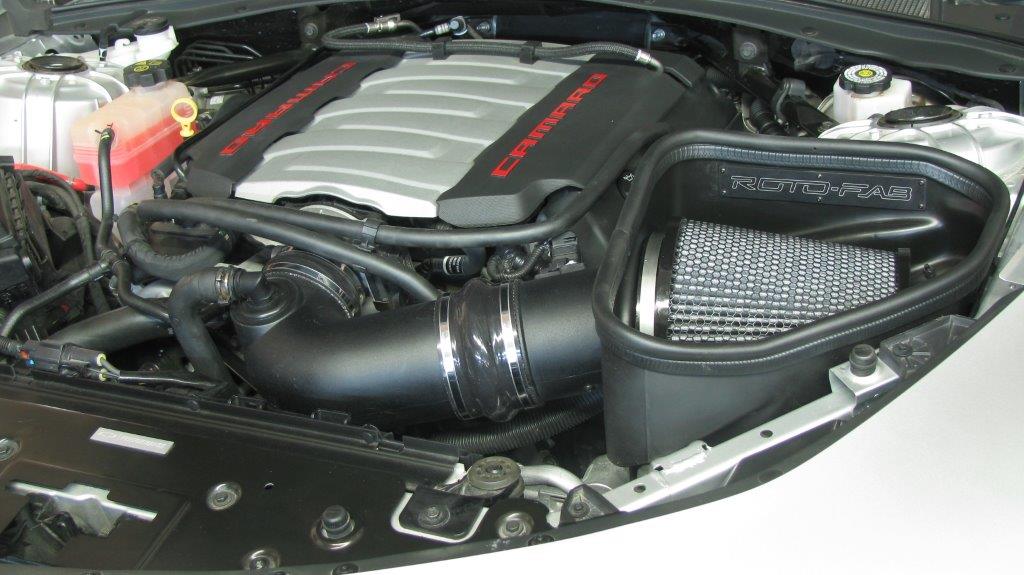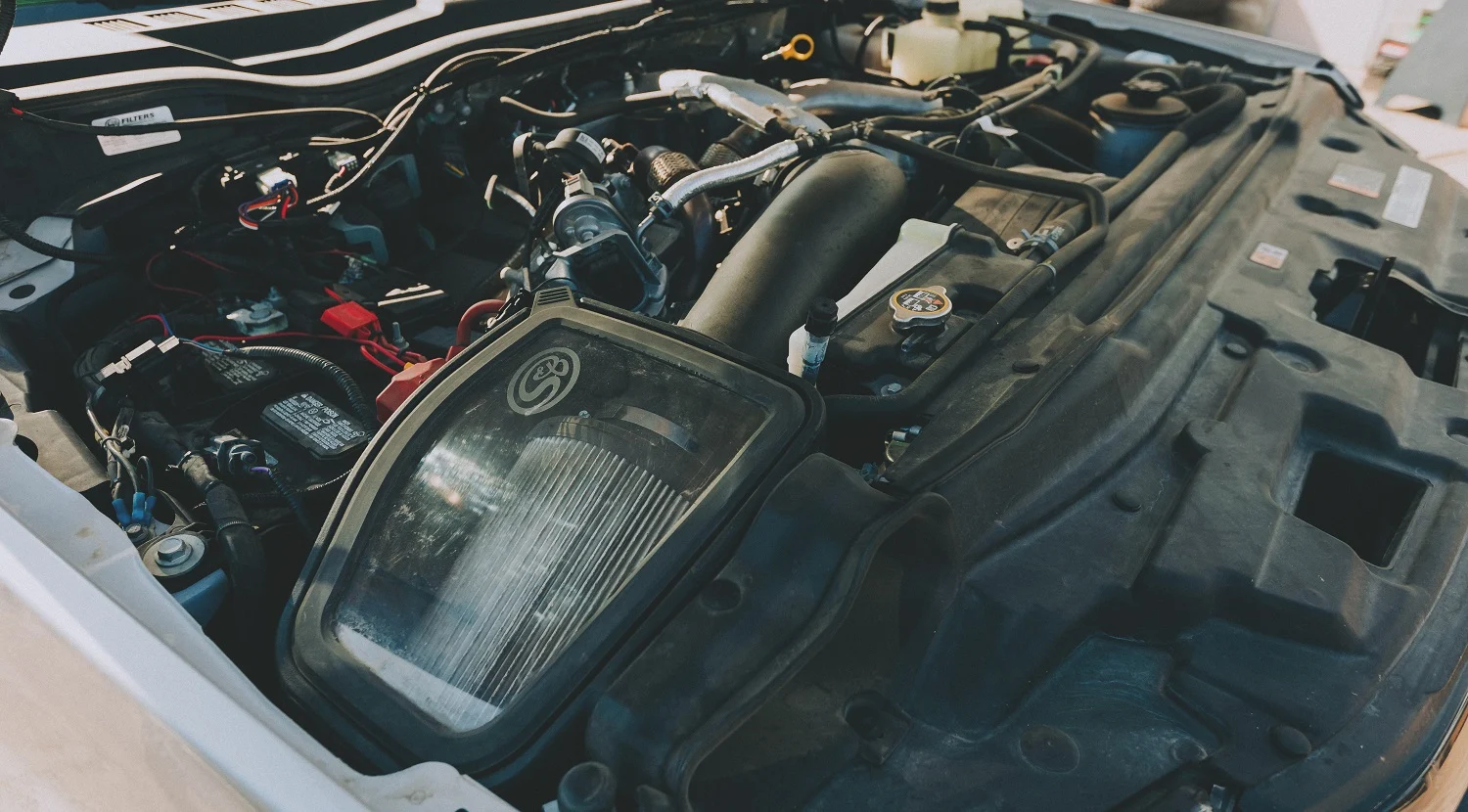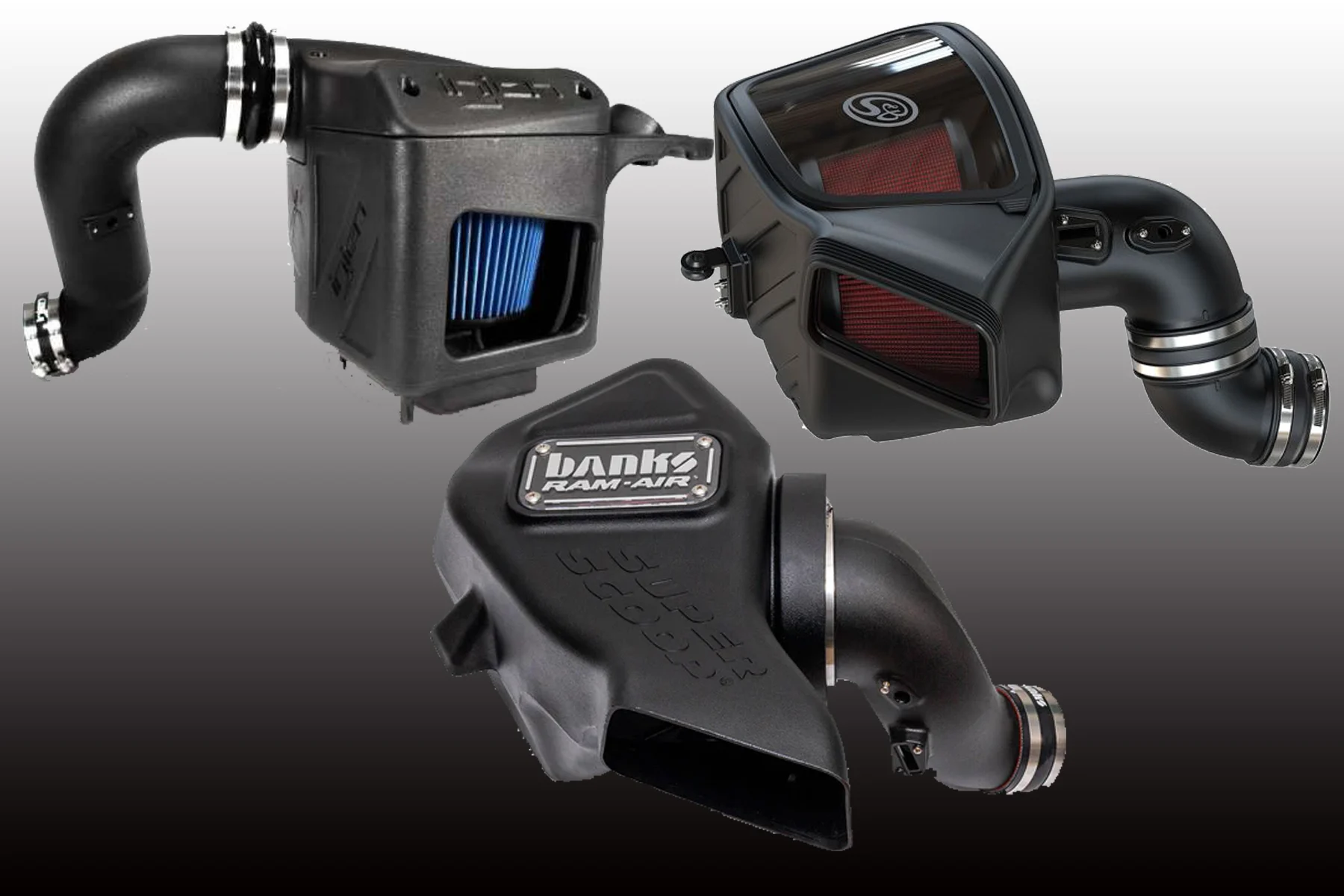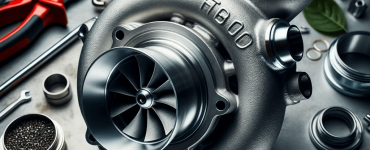Cold Air Intake: Advantages and Disadvantages Explained
Cold air intake is a popular aftermarket modification that many car enthusiasts install to boost their vehicle’s performance. This modification involves replacing the stock air intake system with a system that draws in cooler air from outside the engine compartment. The idea behind cold air intake is that cooler air is denser, which allows for more oxygen to enter the engine, leading to increased horsepower and better fuel economy. In this article, we will dive deeply in the pros and cons of cold air intake!
While cold air intake can provide several benefits, there are also some drawbacks to consider. For instance, not all cold air intake systems are created equal, and some may not provide the expected performance gains. Additionally, installing a cold air intake may void the vehicle’s warranty, and improper installation can cause engine damage. It’s important to weigh the pros and cons of cold air intake before making a decision.
Key Takeaways
- Cold air intake can increase horsepower and fuel economy by allowing cooler, denser air into the engine.
- However, not all cold air intake systems are equal, and improper installation can cause engine damage.
- It’s important to carefully consider the pros and cons before installing a cold air intake, as well as to choose a reputable brand and ensure proper installation.
What is Cold Air Intake

Cold air intake is a type of aftermarket modification that replaces the original air intake system of a vehicle with a new one that draws in cooler air. The purpose of this modification is to increase the amount of oxygen that flows into the engine, which can result in improved performance and fuel economy.
The original air intake system of a vehicle typically draws in air from under the hood, which can be heated by the engine and other components. This hot air is less dense than cooler air, which means it contains less oxygen. By replacing the original air intake system with a cold air intake, cooler air from outside the engine bay can be drawn in, which is denser and contains more oxygen.
Cold air intakes can be made from a variety of materials, including plastic, metal, and carbon fiber. They typically include a larger air filter than the original air intake system, which can also improve airflow to the engine.
While cold air intakes can provide some benefits, they are not without drawbacks. Some of the pros and cons of cold air intakes include:
Pros of Cold Air Intake
- Increased horsepower: By increasing the amount of oxygen that flows into the engine, a cold air intake can improve horsepower and acceleration.
- Better fuel economy: Improved airflow can also result in better fuel economy, as the engine can operate more efficiently.
- Improved engine sound: The larger air filter and improved airflow can result in a more aggressive engine sound, which some drivers may prefer.
Cons of Cold Air Intake
- Potential check engine light: Some cold air intakes can cause the check engine light to come on, due to changes in the air-to-fuel ratio.
- MAF sensor contamination: If the air filter is not properly maintained, it can become contaminated with dirt and debris, which can damage the Mass Airflow (MAF) sensor and result in engine problems.
- Low-quality kits: Some cold air intake kits may be poorly designed or made from low-quality materials, which can result in poor performance or even damage to the engine.
Overall, cold air intakes can provide some benefits for drivers who are looking to improve their vehicle’s performance and fuel economy. However, it is important to carefully consider the pros and cons before making any modifications to your vehicle’s air intake system.
Working Principle of Cold Air Intake

A cold air intake (CAI) is an aftermarket device that replaces the factory air intake system on a vehicle. The primary purpose of a cold air intake is to increase the amount of cool air entering the engine. The theory behind a cold air intake is that colder air is denser than hot air, which means that it contains more oxygen per unit volume. This increased oxygen content can result in more efficient combustion and increased engine power.
When fuel is burned in an engine, it requires oxygen to support the combustion process. The more oxygen that is available, the more fuel that can be burned, and the more power that can be produced. A cold air intake can increase the amount of oxygen that is available by increasing the density of the air entering the engine.
The temperature of the air entering the engine can also affect the combustion process. Hot air is less dense than cold air, which means that it contains less oxygen per unit volume. This can result in less efficient combustion and reduced engine power. A cold air intake can help to reduce the temperature of the air entering the engine, which can improve combustion efficiency and increase engine power.
The airflow through the engine is also an important factor in combustion efficiency. A cold air intake can help to increase airflow by reducing the amount of restriction in the air intake system. This can allow more air to enter the engine, which can improve combustion efficiency and increase engine power.
Overall, the working principle of a cold air intake is to increase the amount of cool, dense air entering the engine. This can result in more efficient combustion and increased engine power. However, it is important to note that the benefits of a cold air intake may vary depending on the specific vehicle and driving conditions.
Pros of Cold Air Intake
A cold air intake system is an aftermarket modification that replaces the factory air intake system with a custom-designed system that draws in colder air from outside the engine compartment. The following are some of the benefits of installing a cold air intake system:
1. Increased Horsepower and Performance
One of the primary benefits of a cold air intake system is that it can increase horsepower and performance. By drawing in cooler, denser air, the engine can burn more fuel and generate more power. The increased airflow and oxygen supply to the engine also improve throttle response, resulting in better acceleration and improved overall performance.
2. Improved Engine Efficiency
A cold air intake system can also improve engine efficiency by allowing the engine to breathe more easily. The increased airflow reduces the amount of work the engine has to do to draw in air, which can improve fuel economy. The improved efficiency can also lead to longer engine life and reduced maintenance costs.
3. Better Engine Sound
Cold air intake systems are designed to provide a more aggressive engine sound. The sound is a result of the increased airflow and the unique design of the intake system. The sound can be a desirable feature for car enthusiasts who want their vehicle to sound more powerful.
4. Cooler Air
Another benefit of a cold air intake system is that it draws in cooler air from outside the engine compartment. The cooler air can help to reduce engine heat and prevent overheating. It can also improve the lifespan of engine components by reducing wear and tear caused by excessive heat.
5. Easy to Install
Cold air intake systems are relatively easy to install and can be done with basic tools. Most systems come with detailed instructions and all the necessary hardware. The installation process can be completed in a few hours, and no special skills are required.
Overall, a cold air intake system can provide numerous benefits to a vehicle’s performance and efficiency. By drawing in cooler, denser air, the engine can burn fuel more efficiently, resulting in increased horsepower and better overall performance. The installation process is relatively simple, and the system can be a worthwhile investment for car enthusiasts looking to improve their vehicle’s performance.
Cons of Cold Air Intake
While cold air intake systems offer several benefits, they also have some drawbacks that should be considered before installation.
Warranty
One of the potential drawbacks of a cold air intake system is that it may void the vehicle’s warranty. If the manufacturer determines that the cold air intake caused damage to the engine or other components, they may refuse to cover the cost of repairs. It is important to check the warranty before installing a cold air intake to avoid any potential issues.
Lean Conditions
Another potential issue with cold air intake systems is that they can create lean conditions in the engine. This occurs when there is an excess of air and not enough fuel in the combustion chamber. Lean conditions can cause damage to the engine and decrease performance.
Moisture
Cold air intake systems can also increase the amount of moisture that enters the engine. This can lead to corrosion and other damage to the engine components. It is important to ensure that the cold air intake system is properly installed and sealed to prevent moisture from entering the engine.
Sound
While some car enthusiasts appreciate the sound of a cold air intake system, others may find it too loud or obnoxious. It is important to consider the noise level of the system before installation, especially if the vehicle is used for daily commuting.
Debris
Cold air intake systems can also increase the amount of debris that enters the engine. This can cause damage to the engine components and decrease performance. It is important to ensure that the air filter is properly maintained and cleaned to prevent debris from entering the engine.
Hydro-locking
One of the most serious potential issues with cold air intake systems is hydro-locking. This occurs when water enters the engine and causes it to lock up. Hydro-locking can cause significant damage to the engine and may require costly repairs.
Check Engine Light
Installing a cold air intake system may also cause the check engine light to come on. This can occur if the system disrupts the airflow sensor or other engine components. It is important to ensure that the system is properly installed and does not cause any issues with the engine sensors.
Idle and Overheating
Finally, cold air intake systems can also cause issues with idle and overheating. If the system is not properly installed or maintained, it can cause the engine to idle poorly or overheat. This can cause damage to the engine and decrease performance.
Related Posts:
Impact on Engine and Vehicle Performance

A cold air intake system can have a significant impact on the engine and vehicle performance. Here are some of the ways it can affect your car:
Increased Horsepower and Torque
Cold air intake systems can increase the horsepower and torque of an engine by improving the combustion process. Cooler air is denser, which means that more oxygen is available for combustion. This can lead to a more efficient combustion process, resulting in more power and torque.
Quicker Throttle Response and Acceleration
A cold air intake system can also improve the throttle response and acceleration of a vehicle. With a cold air intake, the engine can receive more air more quickly, which can improve the response of the gas pedal and lead to quicker acceleration.
Improved Fuel Efficiency
Another benefit of a cold air intake system is improved fuel efficiency. With a better combustion process, the engine can burn fuel more efficiently, which can lead to better gas mileage.
Longer Engine Life
Engines running on colder temperatures could have a longer lifespan. This will also benefit the engine components such as the radiator.
Improved Engine Sound
Cold air intake systems can also improve the sound of an engine. With a better airflow, the engine can produce a more aggressive and sporty sound, which can enhance the overall driving experience.
However, there are also some potential downsides to installing a cold air intake system. One of the main concerns is that the intake can disrupt the airflow sensors in the engine, which can lead to inaccurate readings and potentially cause damage to the engine. Additionally, some cold air intake systems may not be legal in certain states, so it’s important to check local regulations before installing one.
Overall, a cold air intake system can be a great way to improve the performance of your vehicle. However, it’s important to carefully consider the potential benefits and drawbacks before making a decision.
Cold Air Intake and Fuel Economy
A cold air intake system can have a positive effect on a vehicle’s fuel economy. The system works by drawing in colder air, which is denser and contains more oxygen. The increased oxygen levels can lead to better fuel combustion, which can result in improved fuel efficiency and gas mileage.
According to a study by the U.S. Department of Energy, a 10-degree decrease in air temperature can lead to a 1-2% increase in fuel economy. By drawing in colder air, a cold air intake system can provide a significant boost to fuel efficiency.
However, it is important to note that a cold air intake system alone may not be enough to significantly improve fuel economy. Other factors, such as driving habits and vehicle maintenance, can also play a role in determining fuel efficiency.
Additionally, installing a cold air intake system may cause the engine to run lean, which can lead to decreased fuel efficiency. It is important to ensure that the system is properly installed and tuned to avoid any negative effects.
In summary, a cold air intake system can potentially improve fuel economy by increasing oxygen levels and promoting better fuel combustion. However, the impact on fuel efficiency may vary depending on various factors, and proper installation and tuning are crucial to avoid any negative effects.
Cold Air Intake Maintenance
A cold air intake system is an aftermarket modification that can enhance the performance of a vehicle by increasing horsepower and fuel economy. However, to maintain its optimum performance, regular maintenance of the cold air intake system is necessary.
The most important component of the cold air intake system is the air filter. The air filter is responsible for preventing debris and dirt from entering the engine. Over time, the air filter can become clogged with dirt and debris, which can reduce the performance of the engine. Therefore, it is recommended to clean or replace the air filter periodically.
The frequency of cleaning or replacing the air filter depends on the type of filter used in the cold air intake system. Some filters can be cleaned and reused, while others need to be replaced. It is important to refer to the manufacturer’s instructions on how to clean or replace the air filter.
Another important aspect of cold air intake maintenance is to ensure that the filter is properly sealed. A loose or improperly sealed filter can allow unfiltered air to enter the engine, which can cause damage to the engine. Therefore, it is important to check the filter seal periodically and ensure that it is properly installed.
In addition to the air filter, it is also important to inspect the cold air intake system for any signs of damage or wear. The tubing and connections should be checked for cracks or leaks, which can cause a reduction in performance. Any damaged or worn components should be replaced immediately to ensure the proper functioning of the cold air intake system.
Overall, regular maintenance of the cold air intake system is necessary to ensure its optimum performance. By cleaning or replacing the air filter, checking the filter seal, and inspecting for any signs of damage or wear, the cold air intake system can continue to enhance the performance of the vehicle.
Popular Aftermarket Cold Air Intakes
When it comes to aftermarket cold air intakes, there are a few brands that stand out from the rest. One of the most popular brands is K&N, which offers a variety of cold air intakes for different makes and models. K&N cold air intakes are designed to increase horsepower and torque, while also providing better engine sound and throttle response. They are made from high-quality materials and come with a washable and reusable air filter.
Another popular brand is Spectre Performance, which offers a range of cold air intakes that are designed to provide better engine performance and fuel efficiency. Spectre Performance cold air intakes are made from high-quality materials and come with a washable and reusable air filter. They are also easy to install, which makes them a popular choice among car enthusiasts.
AEM is another popular brand that offers cold air intakes for a variety of makes and models. AEM cold air intakes are designed to provide better engine performance and fuel efficiency, while also reducing engine noise. They are made from high-quality materials and come with a washable and reusable air filter. AEM cold air intakes are also easy to install, which makes them a popular choice among car enthusiasts.
Other popular aftermarket cold air intake brands include Injen, Airaid, and Volant. Each of these brands offers a range of cold air intakes that are designed to provide better engine performance and fuel efficiency. They are made from high-quality materials and come with a washable and reusable air filter. They are also easy to install, which makes them a popular choice among car enthusiasts.
Overall, there are many different brands of aftermarket cold air intakes to choose from. Each brand offers a range of products that are designed to provide better engine performance and fuel efficiency. When choosing a cold air intake, it is important to consider factors such as the make and model of your vehicle, the type of driving you do, and your budget.
Related Posts:
Conclusion: Cold Air Intake Pros and Cons
After analyzing the pros and cons of cold air intake, it is clear that this modification has both advantages and disadvantages.
Cold Air Intake Pros:
- Improved engine performance: By providing cooler, denser air to the engine, a cold air intake can improve horsepower and torque output.
- Better throttle response: A cold air intake can also improve throttle response, allowing the engine to more quickly and efficiently respond to driver inputs.
- Increased fuel efficiency: In some cases, a cold air intake can improve fuel efficiency by helping the engine run more efficiently.
Cold Air Intake Cons:
- Increased engine sound: One of the main drawbacks of a cold air intake is that it can increase the engine sound, which may not be desirable for all drivers.
- Cost: A cold air intake can be expensive, and the cost may not be worth it for some drivers.
- Potential for damage: A poorly designed or installed cold air intake can potentially allow water or debris to enter the engine, causing damage.
Overall, a cold air intake can provide noticeable performance benefits for some drivers, but it is important to carefully consider the potential drawbacks and ensure that the modification is installed correctly.





[…] Cold Air Intake for 6.0 Vortec – Buyer’s Guide […]
[…] cold air intake is a popular upgrade for car enthusiasts looking to improve their vehicle’s performance and […]
[…] engine sound levels along with some ways to customize the tone. Let’s find out more about cold air intake […]